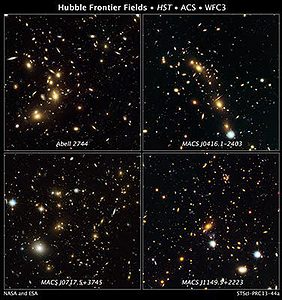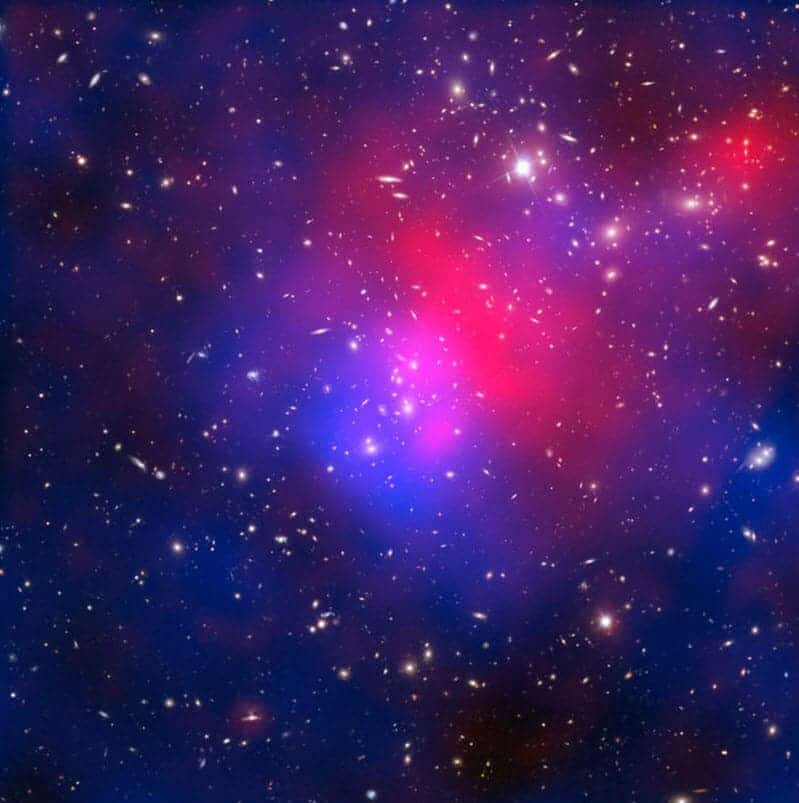
Each of NASA’s Great Observatories – Hubble, Spitzer and Chandra – have been designed to peer through the Universe in a characteristic manner. The telescopes have provided along the years massive amount of astronomical data and have helped scientists make important discoveries. What if you combine each of the telescopes’ strong points to assemble one massive probe capable of seeing farther in the Universe than ever before? That’s exactly what The Frontier Fields ambitious space program will undertake in the following three years, combining the observational power of all three major NASA telescopes along with natural gravitational lenses to study six massive clusters of galaxies.
“The Frontier Fields program is exactly what NASA’s Great Observatories were designed to do; working together to unravel the mysteries of the universe,” said John Grunsfeld, associate administrator for NASA’s Science Mission Directorate in Washington. “Each observatory collects images using different wavelengths of light with the result that we get a much deeper understanding of the underlying physics of these celestial objects.”
The program will tackle galaxy clusters that are among the most massive assemblages of matter known. Because of their humongous mass, these galaxy clusters (hundreds to thousands of galaxies bound together by gravity), exert powerful gravitational fields which can be used to brighten and magnify more distant galaxies so they can be observed. This is called gravitational lensing and because of it light rays that would have otherwise not reached the observer are bent from their paths and towards the observer.

The first object the astronomers will be directing their view towards is Abell 2744 or Pandora’s Cluster. This giant cluster is actually thought to be the result of four distinct galaxy clusters that piled-up over the span of 350 million years. Studying this cluster, astronomers hope they can discover galaxies that were formed just a few hundred millions years after the Big Bang.
“The idea is to use nature’s natural telescopes in combination with the great observatories to look much deeper than before and find the most distant and faint galaxies we can possibly see,” said Jennifer Lotz, a principal investigator with the Space Telescope Science Institute in Baltimore, Md.
Each Great Observatory will have its role to play. Hubble tells astronomers in which way to direct their view and how many galaxies or stars are born in a system. Spitzer can relay how old these cosmic bodies are. Chanda, using its X-ray wavelengths instruments, will image the clusters and tell astronomers what their mass and gravitational lensing power is.
“We want to understand when and how the first stars and galaxies formed in the universe, and each great observatory gives us a different piece of the puzzle,” said Peter Capak, the Spitzer principal investigator for the Frontier Fields program at NASA’s Spitzer Science Center at the California Institute of Technology, Pasadena.


